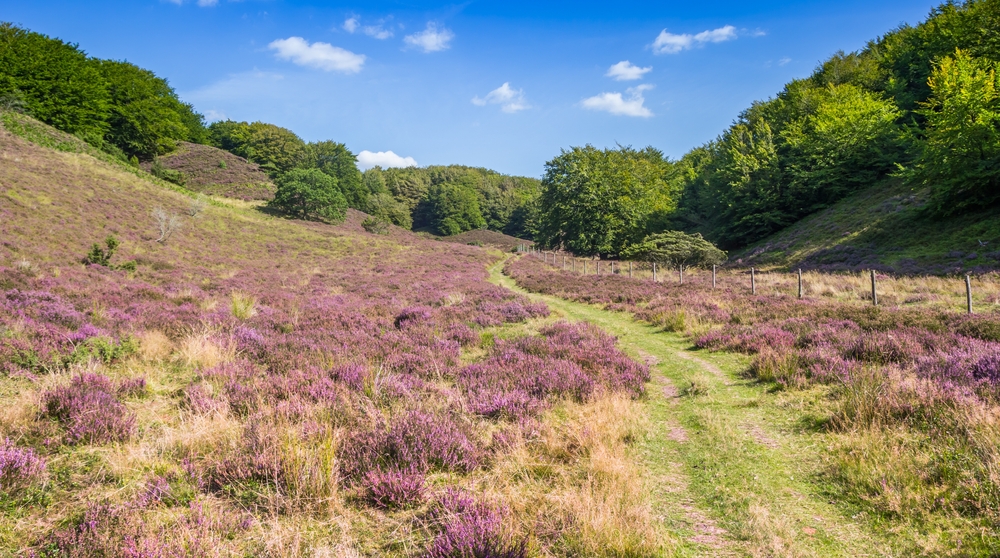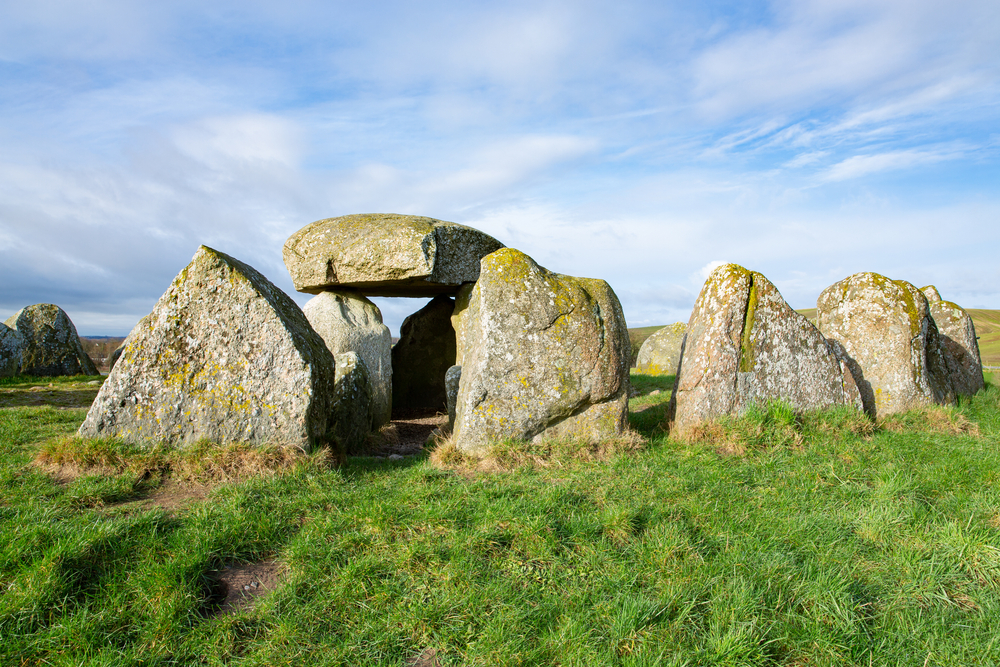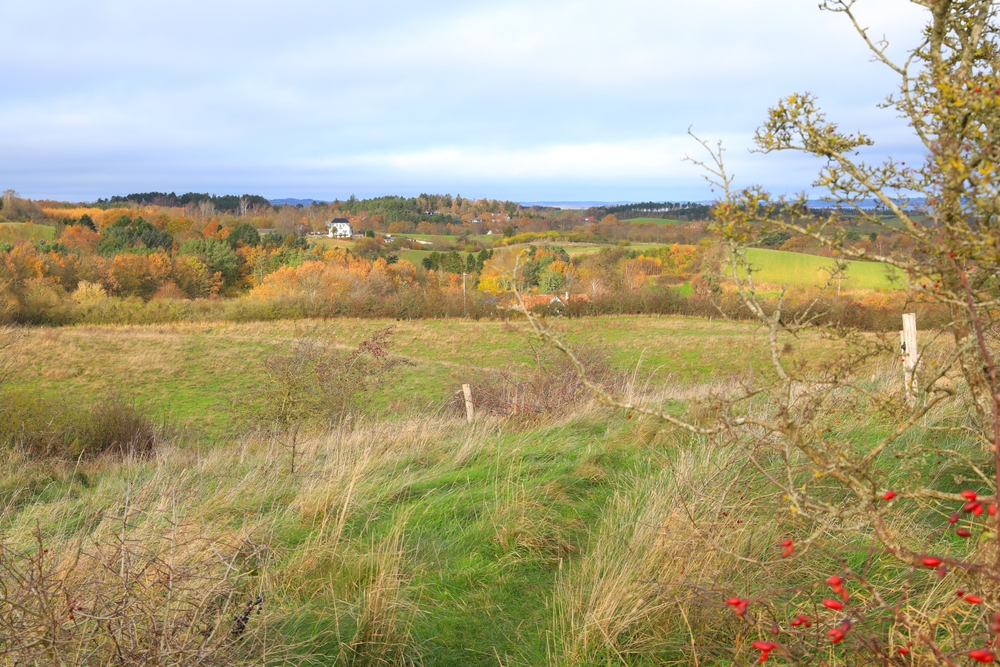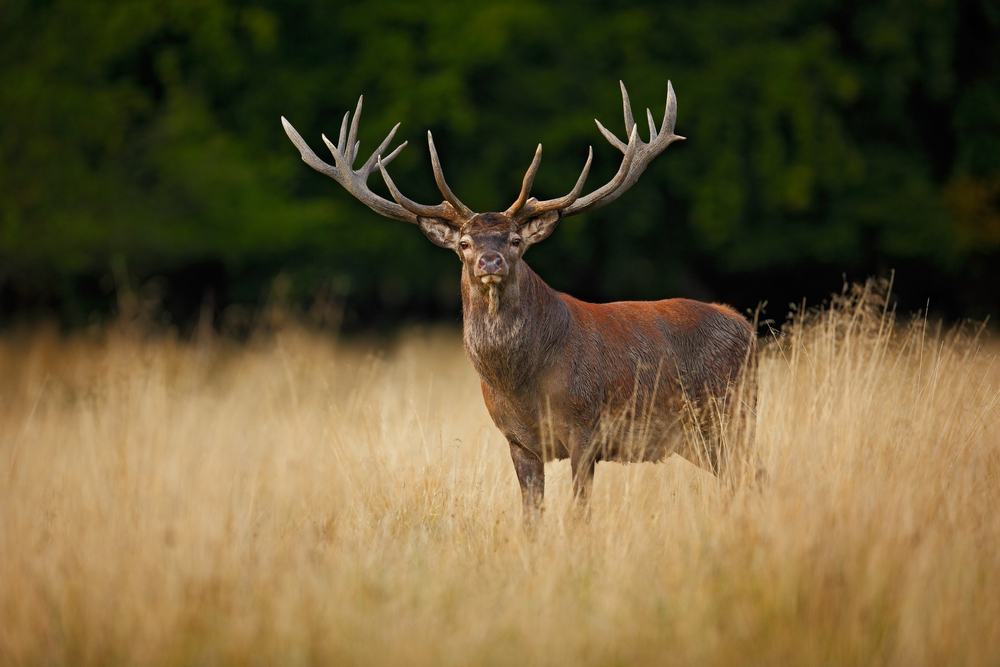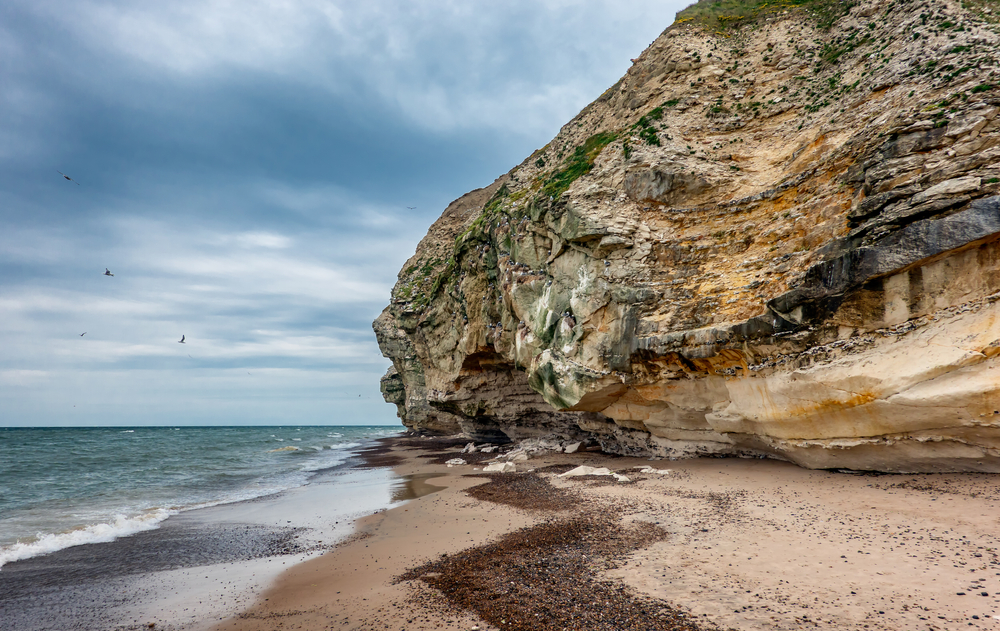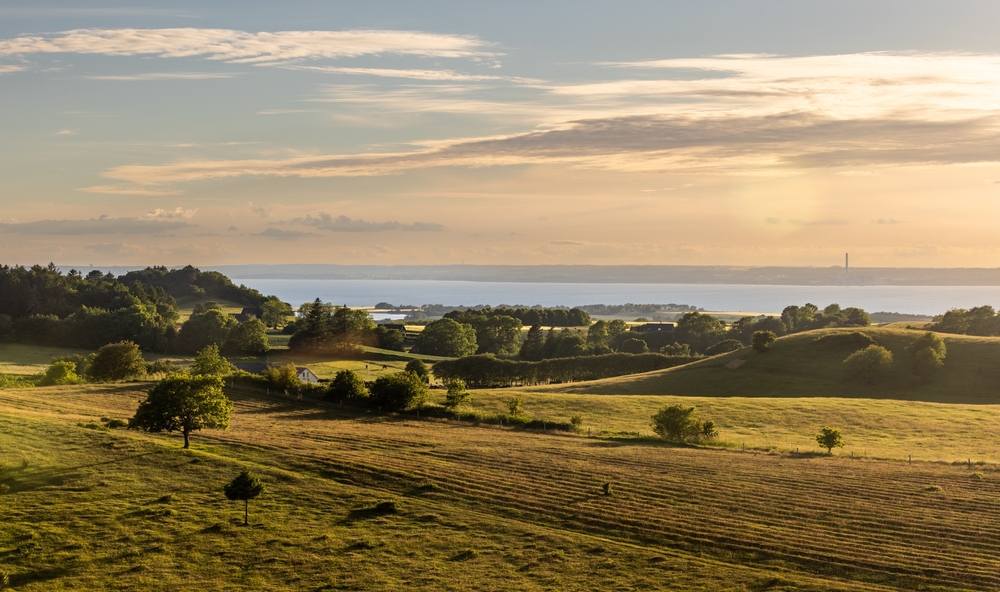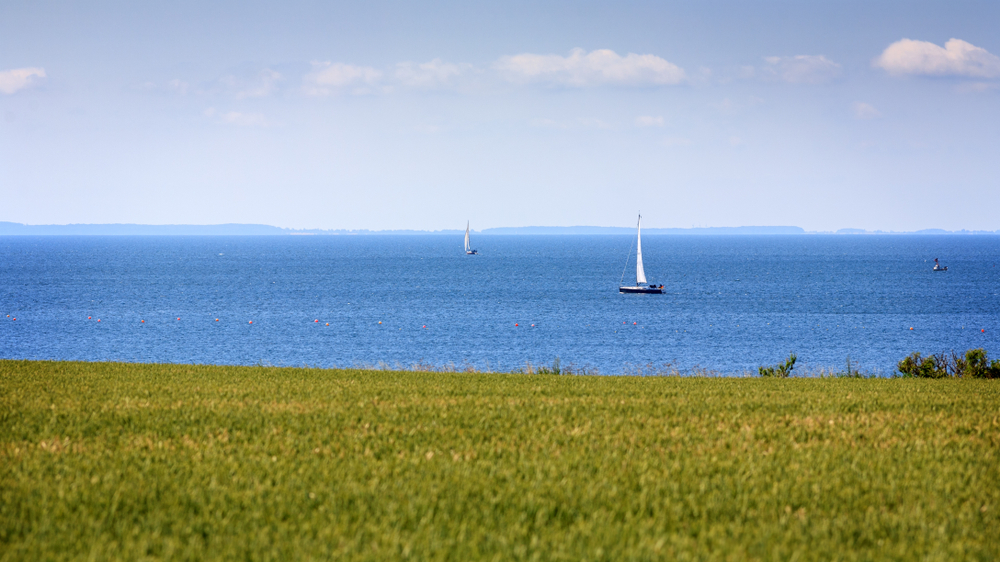Rebild Overview
Rebild National Park, known locally as Rebild Bakker Nationalpark, is a stunning natural reserve located in the Himmerland region of northern Denmark. Covering an area of approximately 2 square miles (5 square kilometers), it is one of Denmark’s smallest national parks but holds immense cultural and natural significance.
Situated near the town of Skørping, the park features rolling heathland, deep valleys, and lush forests that create a picturesque and tranquil landscape. Rebild National Park is unique in that it is privately owned but maintained for public enjoyment, a feature that highlights Denmark’s dedication to preserving its natural heritage while making it accessible to visitors.
The park’s terrain is characterized by its undulating heather-covered hills, which bloom in shades of vibrant purple during late summer, creating a breathtaking visual experience. These hills are interspersed with birch and pine forests, as well as winding streams that carve through the valleys.
The highest point, Ravnkilde Bakke, offers panoramic views of the surrounding countryside, while the mossy floors of the forests provide a serene setting for exploration. Visitors may also encounter freshwater springs, such as the famed Lille Blåkilde, known for its crystal-clear waters and mythological significance in Danish folklore.
Rebild National Park is home to a modest yet fascinating array of wildlife. Visitors may spot roe deer grazing in the meadows or red squirrels darting through the trees. Bird enthusiasts will appreciate the park’s avian residents, which include species like the European robin, woodpeckers, and the elusive nightjar.
The park’s relatively small size means that wildlife encounters can feel more intimate, with opportunities to observe these animals in their natural habitats without the crowds often found in larger parks.
A key feature of the park is its cultural significance. It was established in 1912 as a gift to Denmark from Danish-Americans, and it remains a symbol of transatlantic friendship. The annual Rebild Festival, held on July 4th, celebrates this bond with a blend of Danish and American traditions, drawing thousands of visitors.
Other popular activities in the park include hiking along its well-maintained trails, cycling through its scenic paths, and picnicking in its peaceful clearings. Nature enthusiasts also enjoy the educational opportunities provided by the park, such as guided tours and information about the region’s unique geology and biodiversity.
Conservation plays an essential role in the management of Rebild National Park. Efforts to preserve the fragile heathland ecosystem have been successful, thanks to sustainable practices and community involvement. Challenges such as invasive plant species and the impact of tourism are carefully monitored and managed.
The park’s status as a cultural and ecological treasure has ensured ongoing efforts to balance accessibility with preservation, making it a model for small-scale conservation success.








































































